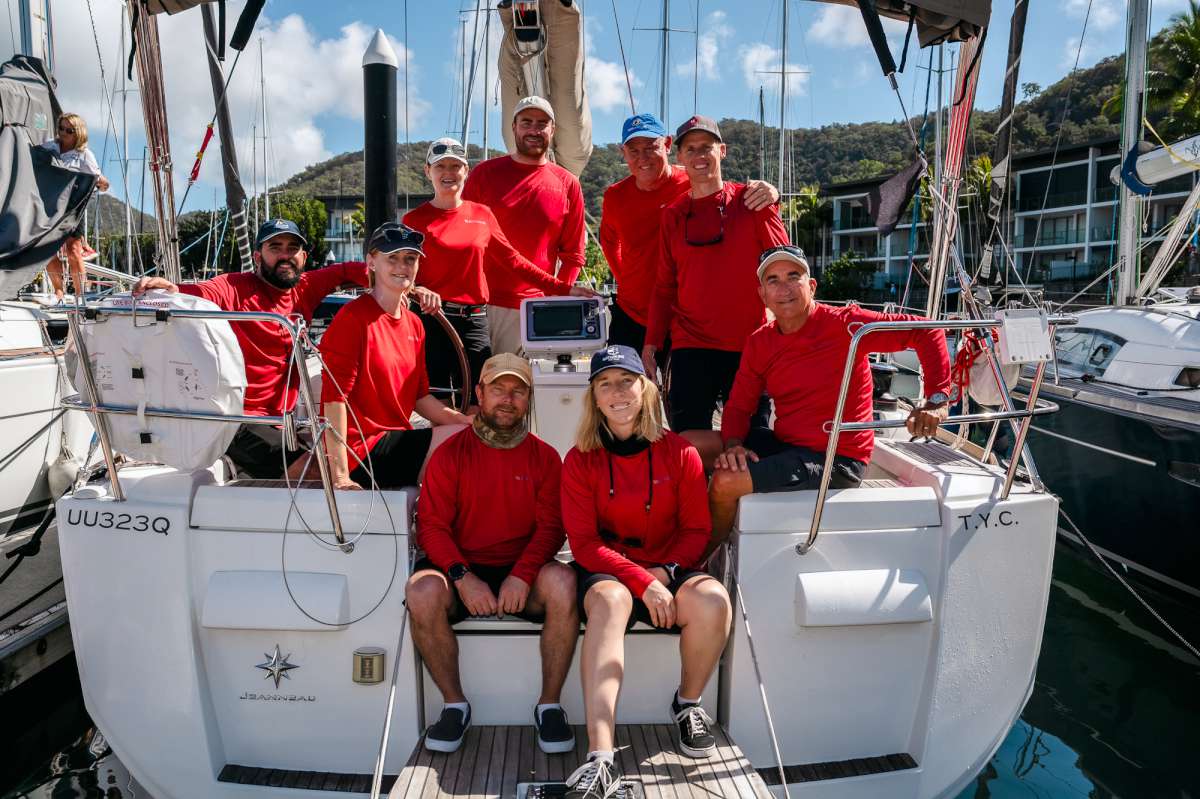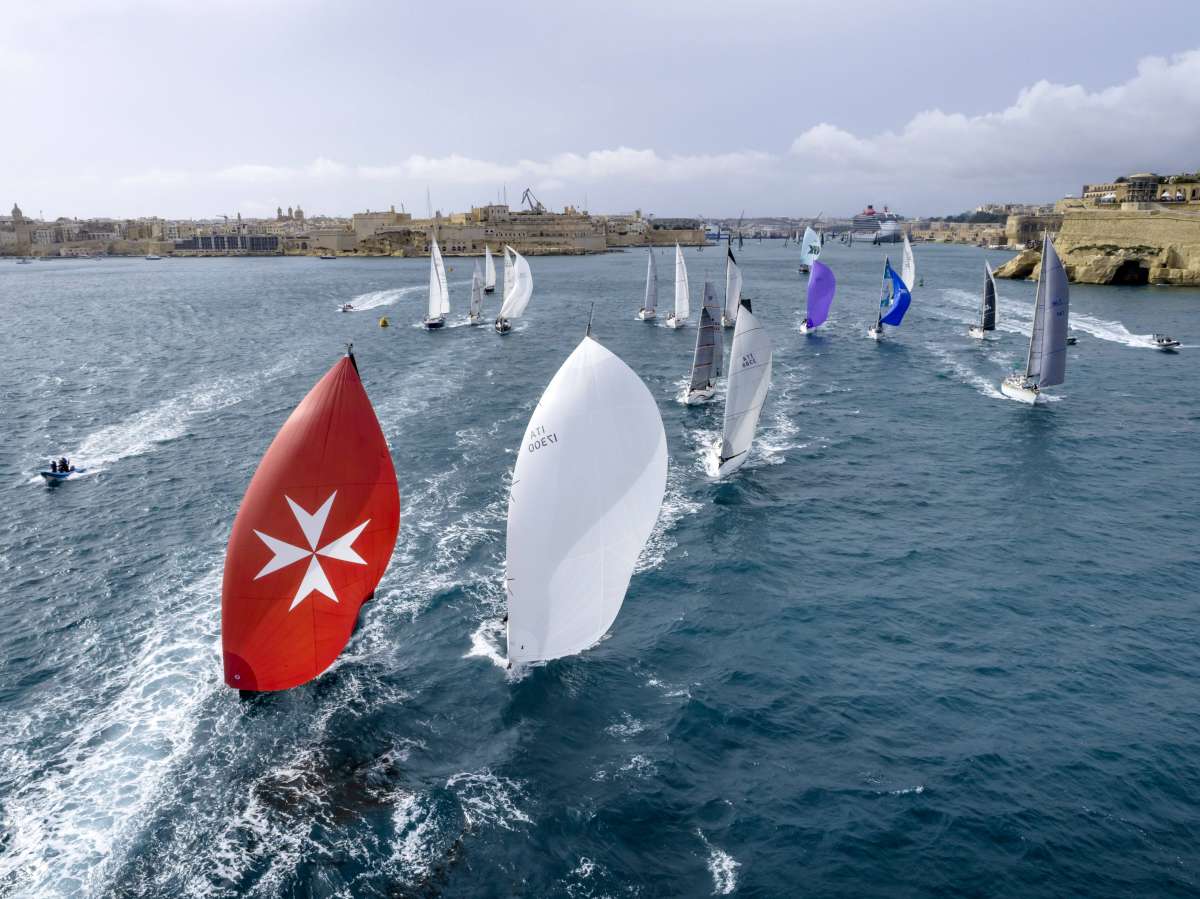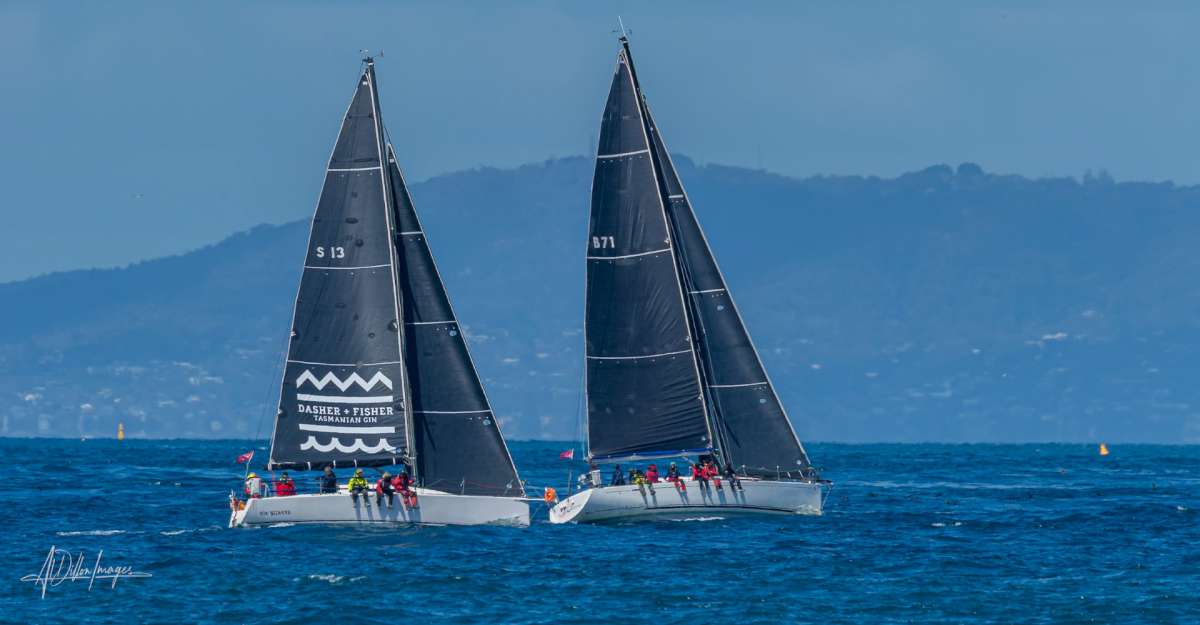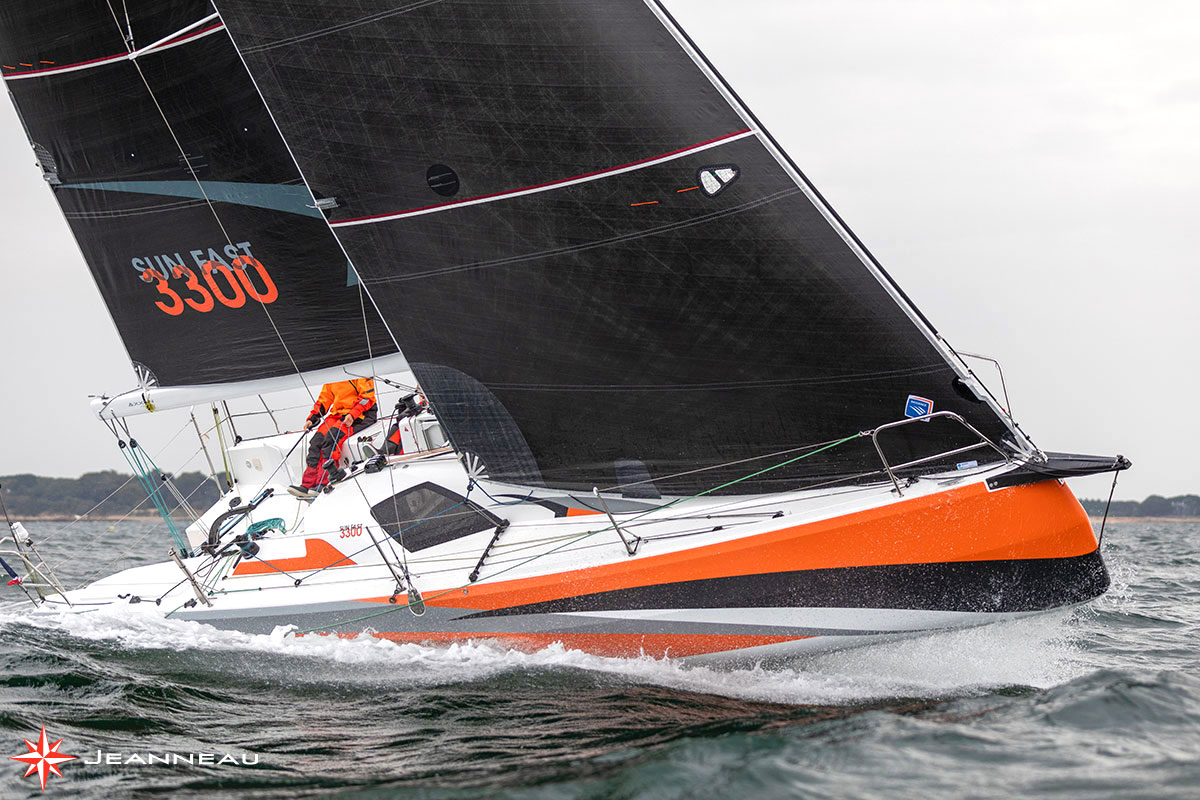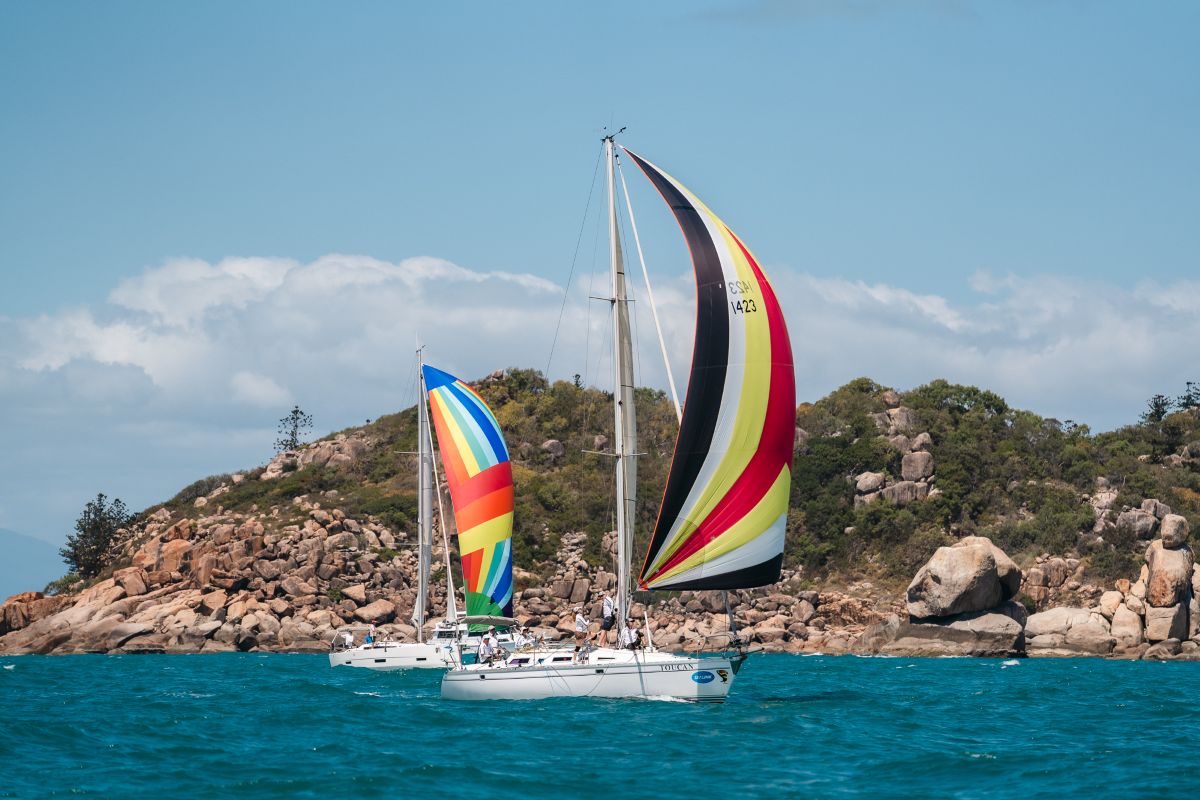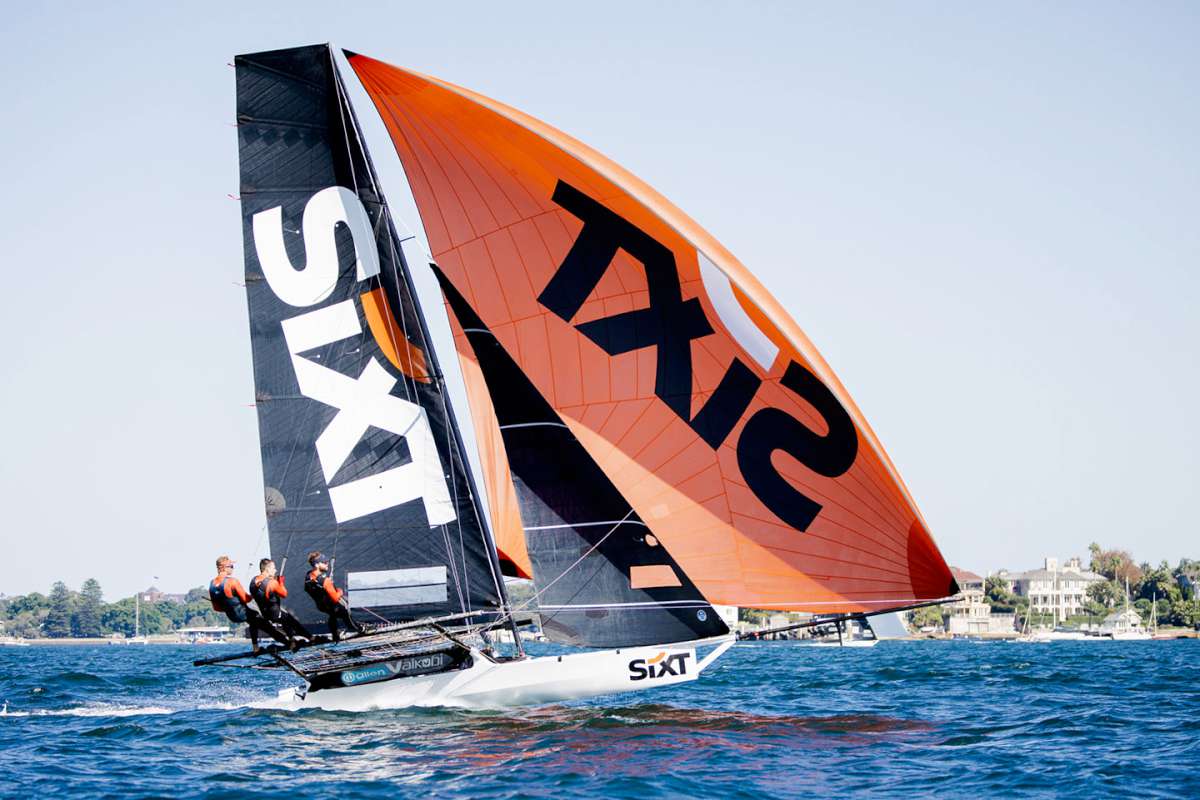The latest Jeanneau 51 has taken a lot of the ideas used in the big sister 54 and utilised them into the shorter version.
Indeed, as I walked down the marina arm at Middle Harbour Yacht Club, I saw the yacht Beyond Cool at the end with a big ‘60’ stuck on its prow. This is to signify the 60 years Jeanneau has been building boats, but it was hard to get the impression out of my head that this was not a 60 foot yacht. This impression is reinforced by the interior as well.
Just like the Jeanneau 54, this new model was designed by naval architect Philippe Briand and designer Andrew Winch. The 51 is the smallest in the Yacht range from Jeanneau. The concept is to present ‘couple’s’ yachts: luxurious, speedy but easily sailed by just two people. Using superyacht designer Winch to bring that luxury feel to the interior is a masterstroke.
The fact Jeanneau have managed to do this on a production yacht built to a price is genius.
Both Mark and Carol Ann, the owners of Beyond Cool, are quite the finicky yacht buyers. They have both done plenty of sailing, both racing and cruising; so, to impress them, a yacht they would buy needed to tick a lot of boxes.
One of Mark’s important criteria was a large cockpit. He likes to sleep overnight under the stars so the cockpit must be long. This also fits in with Carol Ann’s desire to use the cockpit for large party entertaining.
The wide cockpit features multiple zones: the cockpit is clear of winches, includes dedicated space for lounging and entertaining and is comfortable and inviting.
Each activity has been carefully considered and facilitated with distinct living areas.
Specifically speaking
On paper the Jeanneau 51 appears to have a deep canoe body draft, complete with a stubby keel bottomed out with a large L bulb. This keel is deeper than the bigger Jeanneau 54, but the displacement and ballast is a tad lighter.
This lightness also allows the designers to keep the rig shorter with a smaller sail area on its deck-stepped, 9/10ths rig, compared to a competitor I reviewed a while back, the Bavaria Cruiser 51. Other interesting comparisons with the competitor shows the Jeanneau larger in waterline length, beam and draft. Leading me to consider that this is a hull that utilises hull volume for stability and speed.
Plotting the numbers on the graph to show sail area to volume against displacement to length, it places the Jeanneau 51 smack dab in the middle of the racer/cruiser category with a good hull shape that should get up and go while providing a maximum amount of comfort. How comfortably this lightish, large hull would handle a long rolling swell would be of interest.
Certainly, taking it out for a spin there was no sign of being tossed by the long swells rolling in through Sydney Heads. Nor was there any sign of ‘hull slap’ with the nicely rounded aft sections that Briand prefers.
It may well be this combination of hull weight and volume that makes the 51 quite delightful to sail, reminiscent of Jeanneau's smaller 349. The twin wheels with the single rudder is direct and light; at 3000 kilograms lighter than the 54, yet only one a third of a metre shorter on waterline, it can make a big difference to performance.
She was lively in the light breezes, picking up speed quickly without that feel of digging a hole in the water. With its owners choosing the racier Technique Voile sails this 51 will get to a destination fast. The standard sailplan involves a mainsail with in-mast furling coupled with a 110 per cent overlapping genoa. It is easy to opt for the standard main and a self-tacking jib. It is also easy to include the fittings for a cutter rig.
The owner couple opted for the larger Volvo 58 kilowatt (110 horsepower) engine. Heading out we cruised at 2400 revolutions per minute with a smooth 7.4 knots. Cranked up to maximum of 3200rpm we reached 8.6, all with negligible engine noise in the cabin.
The hull is a hand-laid construction, while the cored deck is a two-part vinylester injection moulding that allows it to be made without requiring a second lay-up to provide the smooth interior finish; thus reducing product use, waste and weight. The large ring frames and structural membrane is extensive with pairs of keel bolts located alongside. The deep ring frames also ensure a nice deep wide bilge for good storage and access.
While the on-deck and down below design borrows from the big sister, the side view of the hull in the water is once-again, reminiscent of the smaller, highly successful, Jeanneau 349. The high-sided stem sweeps aft, angling down sweetly to a lower height stern; meeting a slight chine curving up from amidships. With four hull windows to break the eye, this yacht does not sit so dominantly in the water as others of this size. Yet, once onboard, it looks larger
than it is.
Deck life
Much the same as the Yacht 54, where the cockpit is central to socialising, so too the 51 borrows features that worked well; then added some more.
First of all, there are the same forward cutouts into the cabintop extending the bench seats under the dodger. This is what owner Mark was looking for to provide his much wanted leg room when sleeping. At the companionway the benches widen to provide a cozy curl-up space alongside the cabintop. Oh, they also come with in-built cupholders.
Jeanneau claim this is the longest cockpit for any 51 footer. On the coaming outside this widened area are the halyard winches, replicated on both sides and controlling all the mast lines. The winches are recessed and the lines run under the main coaming. This means the cabintop and the decks have no winches or tripping hazards running over them.
Further aft, just forward of the twin steering stations, are the sheet winches. These are set outside the main coaming in its own sunken well, so as not to block access over the coaming. All winches are Harken and the cam cleats are Spinlock.
Both the German mainsheet system and the jib sheets use the same winches. The idea being that you lock one sheet off in the Spinlock cam while use the other on the winch. Kind of clunky, but this is not a racing yacht and speedy tacking is not the main game here.
The solid steering stations have replicated instruments on the binnacles and padded seating that surrounds the helm, which can be folded up when not required or for access to the deep aft lockers. The wheels are outboard and provide excellent 360 degree vision. The starboard station is the predominant with the engine control situated high on the binnacle.
The split hydraulic backstay does not interfere and access in between is excellent to the drop down transom.
The cockpit table is a wide, sturdy affair of which I approve. It provides a stable support in such a large cockpit. Its large central pillar is so wide that it houses the liferaft for possibly the best access I have seen in a production yacht. You could easily seat six around it for al fresco dining.
As a most notable reference to this yacht’s large-yacht pretensions it comes with retractable davits out of the transom to launch and retrieve a tender. They do not encroach on the interior of the stern space and, most importantly, do not get in the way of the stern duckboard.
Opt for the folding transom, which would be sensible, to lounge on its lovely stepped ‘terrace’ area. Pull out the stowed lounge cushions from the locker and you could sit out there all day. There is space for two to lounge and still have room for other guests to play. An added bonus with the folding transom is that it makes man-overboard retrieval much easier on these high, slab-sided designs.
There is a slight bulwark running around the toerail and the shrouds are anchored to the outside of the hull giving a nice wide deck to meander.
On the foredeck Jeanneau has replicated the day bed as seen on the 54. The foredeck locker, aft of the chain locker, is so deep it comes with a ladder and light. Perfect for stowing sails rather than down below, or storing fenders, mooring lines and other bulky gear; maybe even a bowman!
There is a twin bow roller linked to an offset windlass with the anchor locker to starboard. The sprit is for the Code 0 which would add some serious firepower to the yacht’s speed.
Get down
Headroom throughout the interior is 195 centimetres (6 foot, 4 inches); except for the main saloon where it increases to 6’6”, which is a little disconcerting regarding safety in a rough sea state. There is not much use of cabinet fiddles so one has to rely on the cabin-headlining grab rails, these do not appear as strong as a proper hand rail and, at two metres high, makes them difficult to hang on to, if not impossible.
There are three interior options for layout: 2 cabins/2 heads plus workshop/utility room; 2 cabins/skipper cabin/3 heads; or 3 cabins/3 heads. Carol Ann and Mark took the last option but converted the third head, aft of the starboard galley, into a storage utility area. They will add a portable fridge/freezer unit, this allows them to remove the freezer unit in the galley providing a lot more storage space.
The saloon and all the cabins have good natural light and breeze-throughs from plenty of hatches and portholes.
It is a tight galley, which is also one of Carol Ann’s preferences. The U-shape is functional with all manner of storage space, including plenty of large storage under the floorboards all through the saloon between the ring frames, including the now-ubiquituous wine cellar. The benchtop is tough Corian.
This is possibly where the concept of Jeeanneau’s Yacht range stands out. In most other galleys of 50 foot yachts, it is quite a bit larger than this one, mainly due to the abundance of cabins filled with guests and crew. The Yacht 51, however, is maximally designed for the cruising couple, up to a foursome. You can easily turn out large volume dinners in the galley but it is not such a focus of the saloon design, as it is in other yachts.
Naturally, there are a myriad of choices in fabrics, woods (teak and natural oak), leathers and plenty of optional extras. As is custom nowadays the cabinetry and joinery work is excellent. I especially like the leather wraps around the stainless hand rails
The owners upgraded the engine to an 80 kilowatt (110 horsepower) Volvo Penta. This gives them plenty of grunt to get where they want, plus drive them out of any trouble with the extra torque at high speed.
Port side aft cabin is a massive bed (1.6 metres x 2m), it is so large Jeanneau call it a ‘VIP cabin’. It includes its own head and shower cabin, just aft of the forward-facing navigation station. The cabinet and wall in the head are perfectly angled so that when sitting on the toilet you do not bang your knees or squash the feet in. The shower recess has adequate elbow room.
Due to the encroachment of the port cabin across the hull, the starboard berth is smaller. Still passable, however, as a double bed.
The forward cabin is a true master cabin, it is spacious and inviting. A queen size berth with seating to either side and night tables. Due to the offset of the door, the massive private head and shower cabin includes a large hanging locker. There are more hanging lockers in entry to the cabin as well.
The saloon table would sit four comfortably for dinner as the entry door in the foward bulkhead to the owner’s cabin is offset to port. In party mode you could squeeze an extra three around the table. Another two to three could sit on the port-side settee. This settee doubles nicely as a long off-watch bed.
At only three feet shorter, the Jeanneau Yacht 51 is a whopping $100,000 cheaper in base boat price than slightly bigger sister Yacht 54. At that price point it puts a lot of affordable luxury into anyone’s hands. ≈





